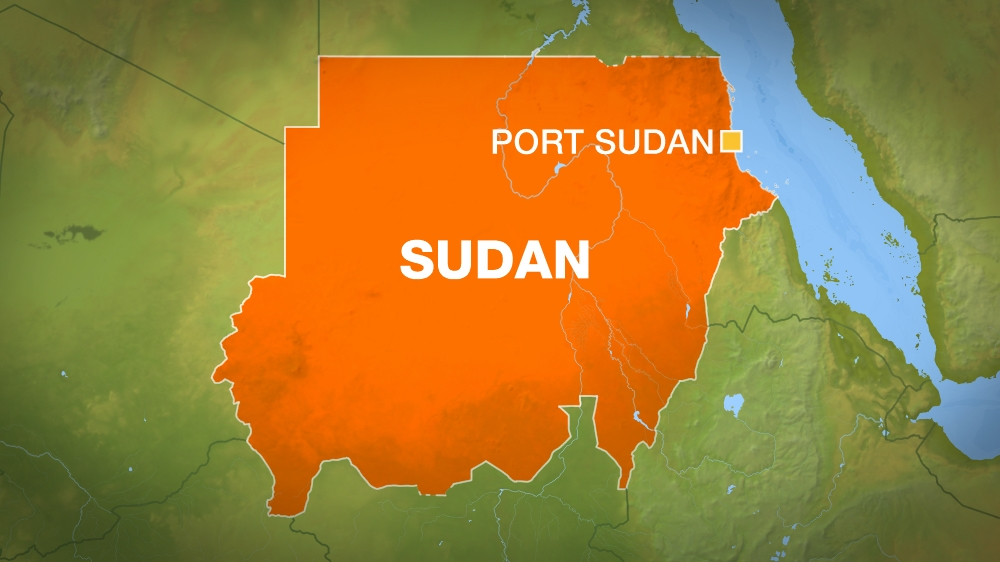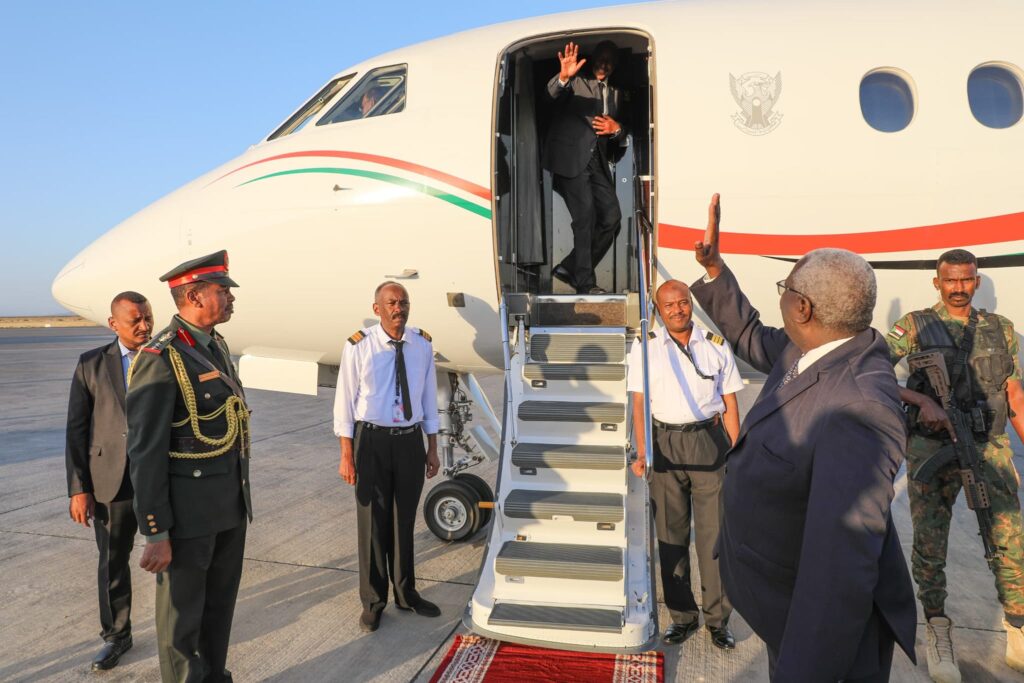The Kremlin’s renewed interest in establishing a naval base in Sudan, particularly in Port Sudan on the Red Sea, reflects a calculated move to reassert global influence, secure strategic maritime access, and challenge Western dominance in a critical transit corridor.
The establishment of a Russian naval base in Sudan represents a landmark development in post-Cold War geopolitics. It solidifies Russia’s strategic reach across Africa and the Middle East, offering military, economic, and symbolic benefits. However, the regional consequences—intensified great-power competition, Red Sea militarization, and increased Sudanese dependency—could destabilize fragile balances in the Horn of Africa.
The base would grant Russia direct access to the Red Sea, a vital chokepoint linking the Mediterranean (via the Suez Canal) to the Indian Ocean. This positioning allows:
- Surveillance and influence over one of the busiest maritime trade routes.
- The ability to project power across North Africa, the Arabian Peninsula, and East Africa.
1.2 Counterbalancing U.S. and Western Presence
The U.S. operates Camp Lemonnier in Djibouti, while France, China, and Japan also maintain military posts nearby. A Russian base would:
- Undermine Western military primacy in the region.
- Provide a logistical node for sustaining operations in the Indian Ocean and beyond, especially as NATO focuses on European flanks.
1.3 Expansion of the “Pivot to Africa” Doctrine
Russia has aggressively expanded its influence in Africa through:
- Arms sales,
- Wagner Group deployments,
- Resource exploitation deals. The base complements this broader geopolitical doctrine.
2. Who Supports It in Sudan and Why
2.1 Military Factions and the RSF
Key Sudanese actors backing the deal include elements of the Sudanese Armed Forces (SAF) and likely factions of the Rapid Support Forces (RSF) under General Mohamed Hamdan Dagalo (“Hemedti”). Their motivations:
- Seek external security guarantees amid internal instability.
- Attract foreign investment and military aid in exchange for strategic access.
Sudanese economic decision-makers and port officials may support the Russian presence due to promises of:
- Infrastructure development,
- Port modernization,
- Job creation, especially around Port Sudan, a crucial economic lifeline.
2.3 Balancing External Powers
Sudan’s leaders often play external actors against one another—U.S., China, UAE, Russia—to maximize leverage. Hosting Russia offers a counterbalance to Western diplomatic pressure on governance and human rights.
Russia’s base could escalate an ongoing arms race along the Red Sea coast, further militarizing:
- The Bab el-Mandeb strait,
- Coastal areas of Eritrea, Djibouti, and Yemen.
3.2 Shifting Alliances

More on this story : Iran and Foreign Red Sea ambitions in Sudan

More on this story: Russia’s Role in Prolonging Sudan’s Crisis

- Egypt, a close Russian arms client, may support the move.
- UAE and Saudi Arabia might see it as a challenge to their dominance in the western Red Sea.
- Ethiopia and Eritrea could deepen military cooperation with Russia to secure their flanks.
- The base could weaken African-led peacekeeping and mediation roles, as regional governments align with great powers rather than multilateral frameworks.
4. Linkages to Syria and the Mediterranean
4.1 Strategic Arc of Influence
The Port Sudan base would serve as a southern anchor to Russia’s Mediterranean position in Syria, particularly its naval base in Tartus:
- Reinforces the idea of a “Red Sea–Levant strategic corridor.”
- Enhances operational logistics for naval deployments between Syria and the Indian Ocean.
4.2 Support to Syrian Regime
A stable naval base in Sudan could facilitate:
- Faster logistics supply to Russian assets in Syria.
- A fallback point for naval operations in case of escalation in the Eastern Mediterranean.
5.1 Cold War Legacy
In the late 1970s, the Soviet Union considered Sudan (and Ethiopia) for base access:
- Naval deployments to Massawa and Assab (then part of Ethiopia).
- Political cooperation with left-leaning regimes (e.g., Nimeiri’s early phase).
By the early 1980s, Sudan pivoted toward the West, and Soviet ambitions evaporated.
- The USSR never built a permanent base in Sudan.
- The idea was shelved with the loss of naval access in Egypt and Somalia.
Russia’s current push is thus both novel and historic—a revival of unfinished Soviet strategy.
6. Financial and Logistical Aspects for Russia
6.1 Cost Estimates
- Construction & Port Development: $150–300 million, depending on the scale (dry docks, warehouses, fuel depots).
- Annual Operating Costs: $30–50 million (rotational crew, ship maintenance, logistics).
- Indirect Costs: Training, equipment transfer to Sudanese partners.
6.2 Economic Offset Options
- Barter arrangements: Infrastructure investment in exchange for port access.
- Mining concessions: Payment through gold or resource rights in Sudan’s interior.
- Arms-for-access deals: Provide weapons in exchange for sovereign territory use.
6.3 Return on Investment
- Cheaper than supporting another full-size Mediterranean deployment.
- Long-term strategic value exceeds monetary costs if Sudan remains compliant.
With Syria as its northern maritime stronghold and Sudan as its southern gate, Russia appears to be crafting a two-pronged naval architecture aimed at securing influence in one of the world’s most strategically sensitive corridors. Its success, however, hinges on Sudan’s internal stability, financial sustainability, and the shifting sands of international diplomacy.
Recent developments indicate that Russia has reached an agreement with Sudan to establish a naval base on the Red Sea coast. On February 12, 2025, Sudanese Foreign Minister Ali Youssef Ahmed al-Sharif confirmed the agreement during a press conference in Moscow, stating that both parties are in complete agreement and there are no obstacles to its implementation.
The agreement allows Russia to station up to four navy ships, including nuclear-powered vessels, for a period of 25 years at the base located in Port Sudan. This development provides Russia with a strategic foothold in the Red Sea, enhancing its naval presence in the region.
This move is seen as part of Russia’s broader strategy to expand its influence in Africa and secure vital maritime routes.The establishment of the base is expected to have significant geopolitical implications, potentially altering the balance of power in the Red Sea and surrounding regions. However, it’s important to note that the region remains volatile, and the successful establishment and operation of the base will depend on ongoing political and security developments in Sudan.

Conflict Simulation Scenarios: Russian Naval Base in Port Sudan
🔴 Scenario 1: Proxy Naval Standoff – U.S. and Allies Respond
Trigger:
Russia begins rotating warships, including nuclear-capable vessels, into Port Sudan, coupled with military exercises near Bab el-Mandeb Strait.
Key Actors:
- Russia;
- United States (via 5th Fleet in Bahrain and Camp Lemonnier, Djibouti);
- France, UK, Saudi Arabia;
- Sudanese Armed Forces (SAF).
Simulation:
- Western navies respond by increasing patrols in Red Sea.
- Sudan permits Russian radar installations; U.S. intelligence warns of surveillance risks to allied naval movements.
- Diplomatic crisis in the UN Security Council erupts over “militarization of the Red Sea.”
Consequences:
- Naval near-collisions and radio jamming incidents.
- Heightened tensions in NATO and Arab League discussions.
- Potential sanctions on Sudanese port officials collaborating with Russia.
🟠 Scenario 2: RSF-SAF Civil War Reignites Over Russian Presence
Trigger:
The Rapid Support Forces (RSF) oppose the Russian base deal, seeing it as an SAF power move that undermines their growing regional autonomy.
Key Actors:
- Sudanese Armed Forces (SAF)
- Rapid Support Forces (RSF)
- Russia (PMC contractors, naval advisers)
Simulation:
- RSF attacks a Russian convoy en route to base construction.
- Russia sends private military contractors (PMCs) for protection.
- Clashes erupt near Port Sudan, disrupting civilian shipping and drawing international concern.
Consequences:
- Humanitarian crisis in eastern Sudan.
- Egypt and UAE back SAF, fearing RSF instability.
- Russia risks being dragged into an internal Sudanese conflict, repeating Syria-style mission creep.
🟡 Scenario 3: Israel-Iran Rivalry Expands to Red Sea
Trigger:
Iranian arms shipments to Houthis in Yemen increase. Russia is accused of tolerating or enabling these movements via Port Sudan surveillance blind spots.
Key Actors:
- Israel
- Iran
- Russia
- Houthis
- U.S. naval assets
Simulation:
- Israel launches targeted strikes on vessels near Sudanese coast.
- Iran responds via Houthi drone attacks on Red Sea shipping.
- Russia calls for “sovereignty respect” but secretly bolsters port defenses.
Consequences:
- Red Sea becomes a new flashpoint in the Israel-Iran shadow war.
- Egypt and Saudi Arabia demand Russian transparency.
- Potential closure or disruption of Suez-bound commerce.
🟢 Scenario 4: Port Sudan Becomes a Wagner Hub – East African Fallout
Trigger:
Russia uses the naval base as a staging ground for Wagner-style operations in Eritrea, Central African Republic (CAR), South Sudan, and potentially Ethiopia.
Key Actors:
- Russia (via Wagner or successor force);
- Local militias in Horn of Africa;
- African Union peacekeepers;
- EU and U.S. diplomatic observers.
Simulation:
- Russian advisors arrive in CAR and Eritrea, deployed from Port Sudan.
- The EU suspends aid over militarization of Russian-supported regimes.
- African Union condemns foreign interference.
Consequences:
- Russia increases influence in African conflict zones.
- Africa-Europe relations deteriorate.
- Growing perception of the Red Sea as a “Russian corridor” into sub-Saharan Africa.
🔵 Scenario 5: Maritime Incident Leads to Escalation
Trigger:
A Russian ship collides with a U.S. drone near Port Sudan during surveillance operations.
Key Actors:
- Russia;
- United States;
- NATO command;
- Sudanese civilians.
Simulation:
- Russia claims sovereignty violations; Sudan blames Western espionage.
- Russia deploys S-400 air defense systems to protect the base.
- NATO ships reroute, citing operational risk.
Consequences:
- Diplomatic freeze in U.S.-Russia maritime cooperation.
- Calls for new Red Sea demilitarization accords.
- Risk of a miscalculation spiraling into a wider conflict.
🔍 Cross-Cutting Themes and Risks
| Risk Area | Impact Level | Description |
|---|---|---|
| Red Sea Militarization | 🔴 High | Multiple powers may increase force projection in response to Russia. |
| Internal Sudanese Instability | 🟠 Medium | The base may inflame SAF-RSF tensions or secessionist movements. |
| Great-Power Escalation | 🔴 High | NATO-Russia tensions could shift from Europe to the Horn of Africa. |
| Economic Disruption | 🟡 Medium | Potential shipping disruptions or sanctions on Port Sudan. |
| Expanded Wagner Activity | 🔴 High | Risk of further conflict spillover into fragile African states. |






